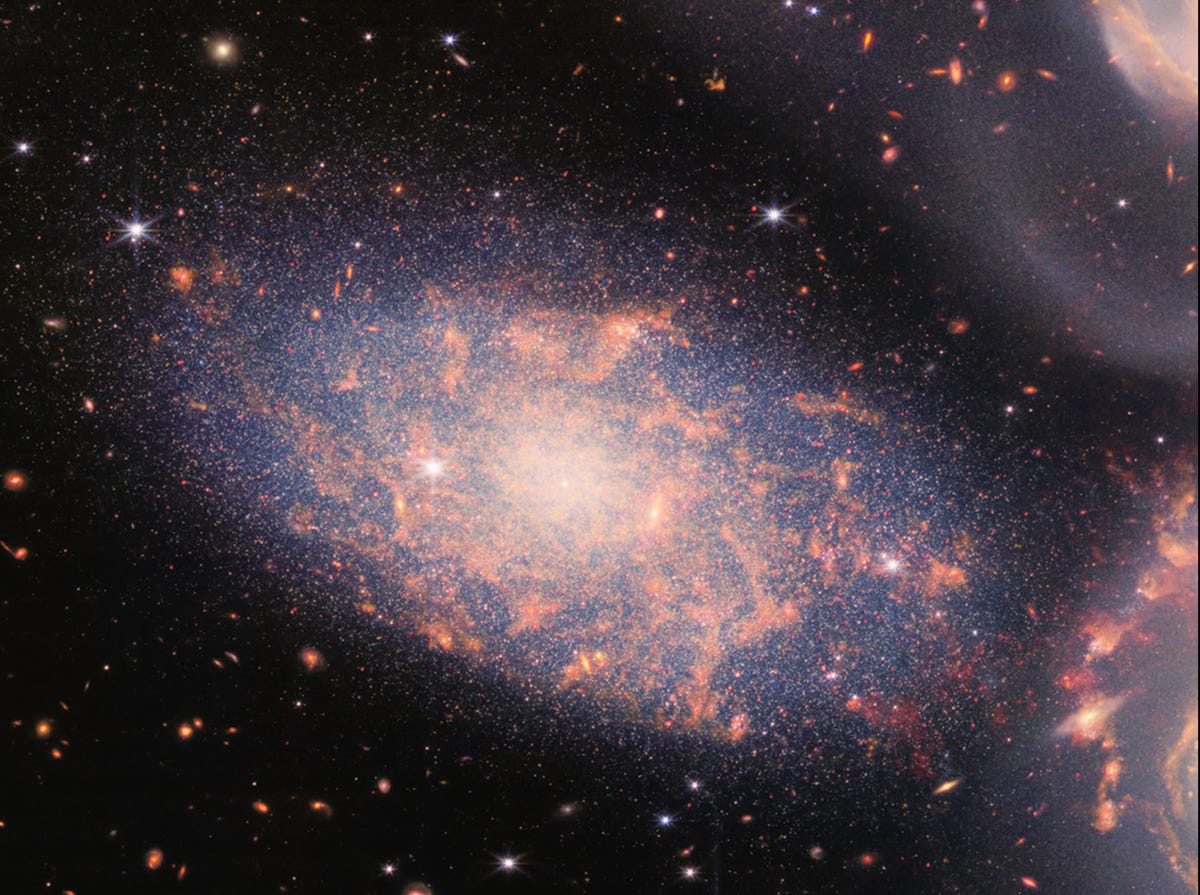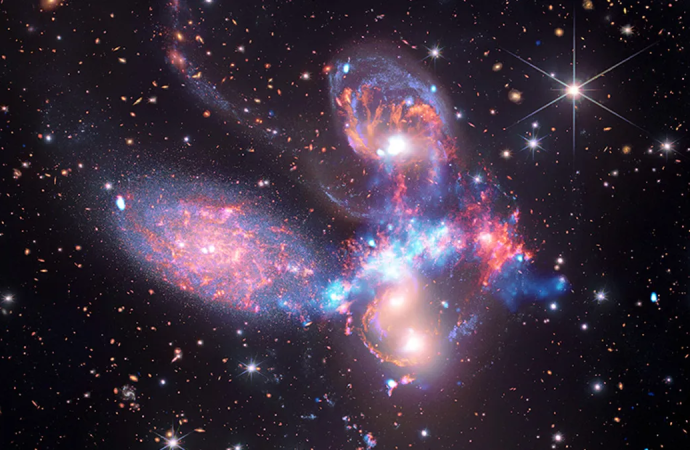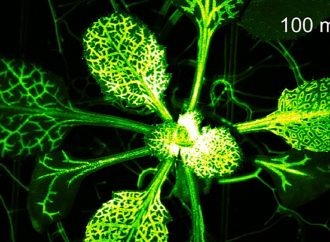Larger than the Milky Way, this wave managed to form a mysterious hydrogen “recycling plant” in one of space’s scariest regions.
Source: CNet
Last year, when I covered the James Webb Space Telescope’s breakthrough set of cosmic images, I described a phenomenal portrait of Stephan’s Quintet with a bunch of contradictory words — which, I admit, tends to be standard practice when talking about deep space spectacles.
This gaggle of five galaxies, some of which are swirling much too close for comfort, hold a realm “fit for a fairytale universe,” I’d said. But I also couldn’t help feeling disturbed by the “terrifying” black hole lurking in the center of another sparkly haze and calling this corner of the universe an overall “frightening” one, as these galaxies are surely locked in an ultimately fatal, air-shattering dance.
And the more we learn about Stephan’s dark-angel quintet, the clearer it becomes that this section of our world is just as majestic, and intimidating, as it looks to be. During an annual American Astronomical Society press conference Monday, scientists said that further observations with the JWST and the powerful Atacama Large Millimeter/submillimeter Array, or ALMA, have revealed absolute chaos happening among these five, luminous galaxies.
First of all, one galaxy — formally named NGC 731b, also known as the “intruder” — is generating a giant shock wave, several times the size of our entire Milky Way, as it “intrudes” intergalactic space of the other four. Along the way, that utterly intense wave is causing a lot of drama because it’s kickstarting a “recycling plant” for clouds of warm and cold molecular hydrogen gas among the quintet.
“A molecular cloud piercing through intergalactic gas, and leaving havoc in its wake, may be rare and not yet fully understood,” Bjorn Emonts, an astronomer at the National Radio Astronomy Observatory and co-investigator on the project, said in a press release. “But our data show that we have taken the next step in understanding the shocking behavior and turbulent life cycle of molecular gas clouds in Stephan’s Quintet.”
And as if that wasn’t wild enough, the team also located a massive bundle of gas by the quintet, steadily breaking apart while a separate tail of warm gas forms nearby.
To sum up the latter bit, this tail is an indication of a possible baby galaxy. Yup, that’d add another character to the tumultuous sit-com at this end of the universe which, thankfully, lies between 39 million and 340 million light-years from where you’re sitting. (One of the galaxies, in the foreground, is significantly closer than its dance partners).

Go to CNet to view the rest of this article
Source: CNet

































Leave a Comment
You must be logged in to post a comment.